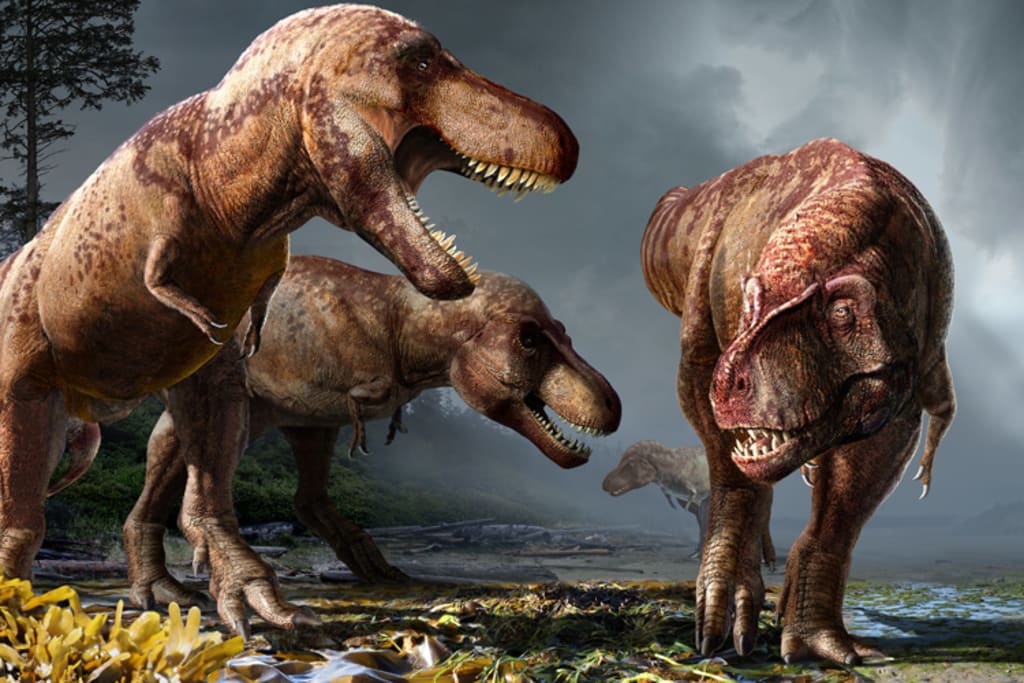Content warning
This story may contain sensitive material or discuss topics that some readers may find distressing. Reader discretion is advised. The views and opinions expressed in this story are those of the author and do not necessarily reflect the official policy or position of Vocal.

In the annals of paleontology, the rediscovery of the Danasaurus marks a significant milestone, illuminating new facets of our planet's distant past. Originally discovered during the fervent "Bone Wars" of the late 19th century, the Danasaurus was long misclassified and overlooked. However, recent advancements in technology and a renewed investigative spirit among modern paleontologists have brought this remarkable dinosaur back into the scientific spotlight, providing new insights into the diversity and evolution of ancient life on Earth.
The Historical Context
The tale of the Danasaurus begins in the 1880s, a period known for intense rivalry between two prominent paleontologists, Othniel Charles Marsh and Edward Drinker Cope. Amidst their fervent competition to unearth and name new dinosaur species, many discoveries were hastily classified. The initial fossils of the Danasaurus, found in the Montana badlands, were mistakenly attributed to a small theropod. This misclassification persisted for over a century, relegating the Danasaurus to obscurity in the vast archives of paleontological finds.
Rediscovery and Modern Analysis
The true identity of the Danasaurus began to emerge in the early 21st century through the diligent efforts of Dr. Emily Turner and her research team. Utilizing state-of-the-art imaging techniques, including CT scans and 3D modeling, the team reexamined the original fossils alongside new specimens unearthed in recent digs. These advanced analyses revealed that the Danasaurus was not a small carnivorous theropod but a distinct genus of herbivorous dinosaur.
Dr. Turner's team identified several unique characteristics that set the Danasaurus apart. Notably, its elongated neck and robust, column-like legs indicated an adaptation to a herbivorous lifestyle, feeding on high vegetation similar to the foraging behavior observed in modern giraffes. The detailed examination of its dentition showed specialized teeth designed for processing tough, fibrous plants, confirming its role as a herbivore.
Anatomy and Physiology
Danasaurus was a medium-sized dinosaur, measuring approximately 20 feet in length and weighing around 2 tons. Its most striking feature was its long neck, suggesting it could reach vegetation at various heights, allowing it to exploit a diverse range of plant life. The structure of its jaws and teeth further supported this diet, with evidence pointing to a capability of handling coarse, fibrous plant materials.
The sturdy build of its legs implied that the Danasaurus was not built for speed but for stability and strength, necessary for supporting its large body while foraging. The combination of these anatomical features painted a picture of a slow-moving, but highly efficient herbivore, well-adapted to its environment.
Habitat and Behavior
Living during the Late Cretaceous period, approximately 75 million years ago, the Danasaurus inhabited what is now the western United States. This region was a lush, warm, and humid environment, rich in vegetation and water sources. The Danasaurus likely thrived in these conditions, roaming the floodplains and forested areas in search of food.
While direct evidence of its social behavior remains elusive, certain fossil evidence suggests that the Danasaurus may have lived in herds. Such social structures would have offered protection against predators and facilitated cooperative foraging strategies, enhancing their survival in the dynamic Cretaceous ecosystems.
Significance in Paleontology
The rediscovery of the Danasaurus has profound implications for our understanding of dinosaur evolution and diversity. It challenges previous assumptions about herbivorous dinosaurs in North America, highlighting the complexity and variability of these ancient creatures. This case underscores the importance of revisiting historical fossil collections with modern technology, as even long-forgotten specimens can yield new and exciting discoveries.
Moreover, the Danasaurus exemplifies the continuous nature of scientific inquiry. As new tools and methodologies emerge, they enable scientists to uncover hidden details and reassess past conclusions, fostering a deeper and more accurate understanding of prehistoric life.
About the Creator
Hamza Bashir
My Name is Hamza Bashir.i am professional artical writter.I have 5+ years experince.
Thank u...
Enjoyed the story? Support the Creator.
Subscribe for free to receive all their stories in your feed. You could also pledge your support or give them a one-off tip, letting them know you appreciate their work.






Comments
There are no comments for this story
Be the first to respond and start the conversation.